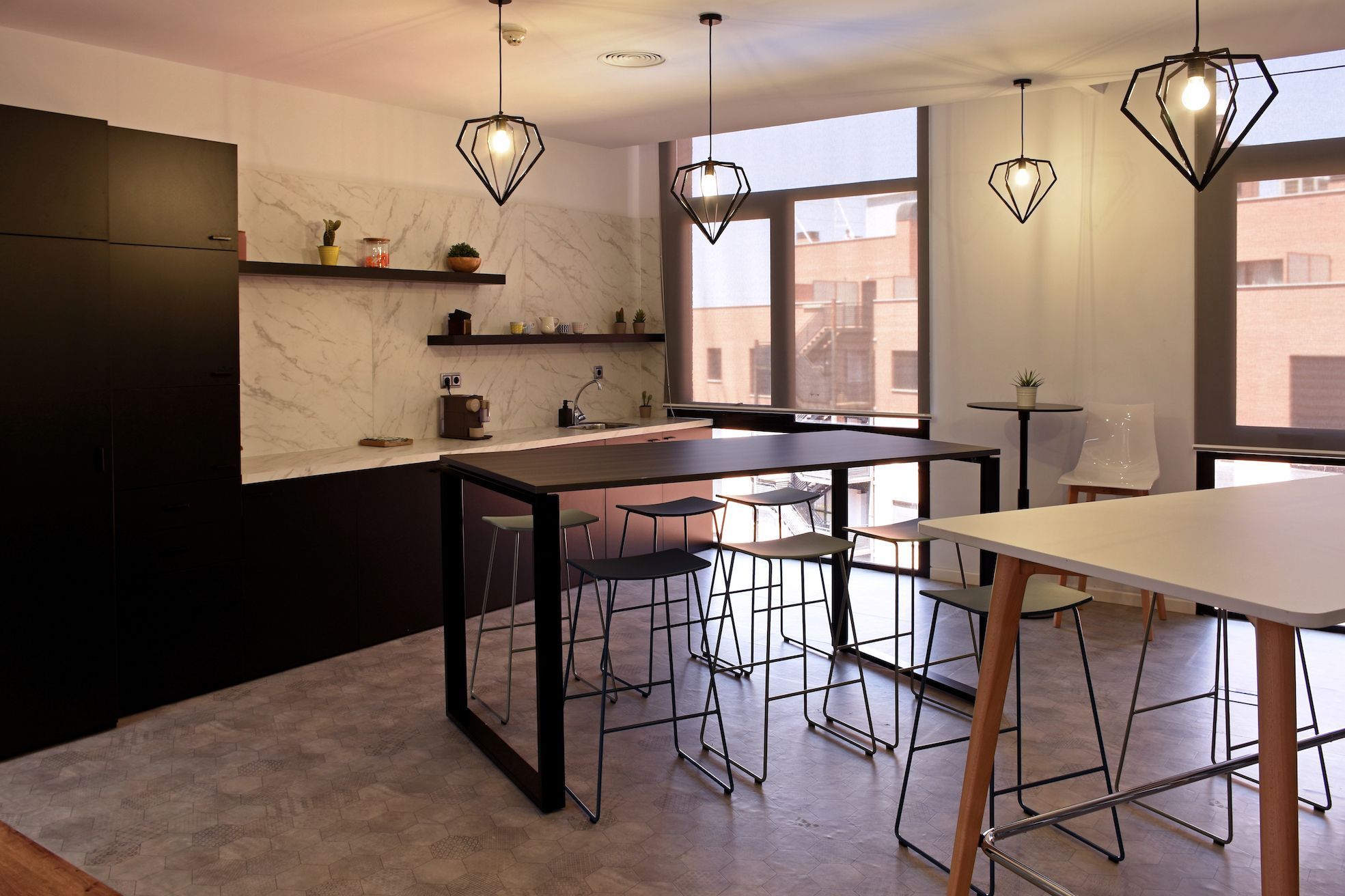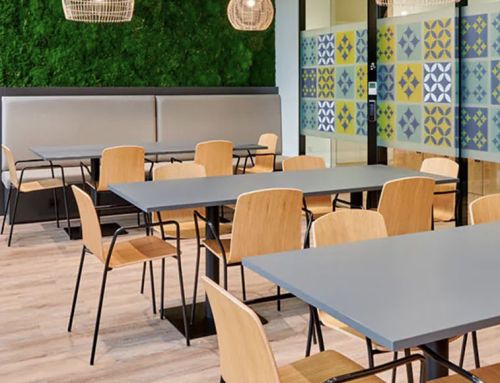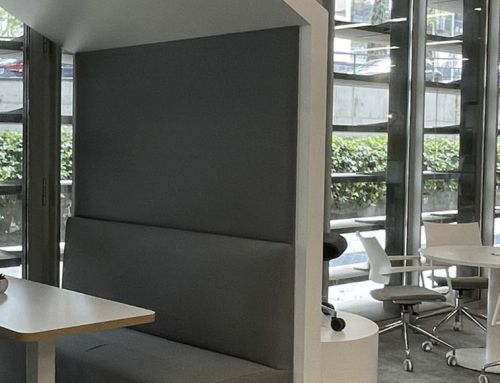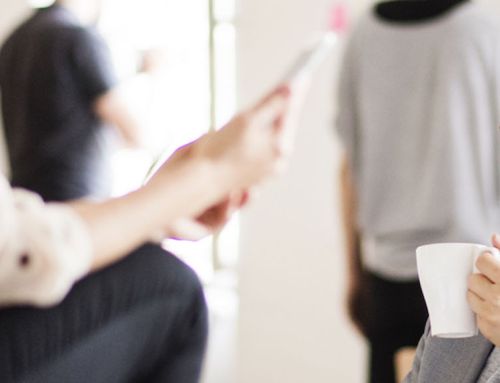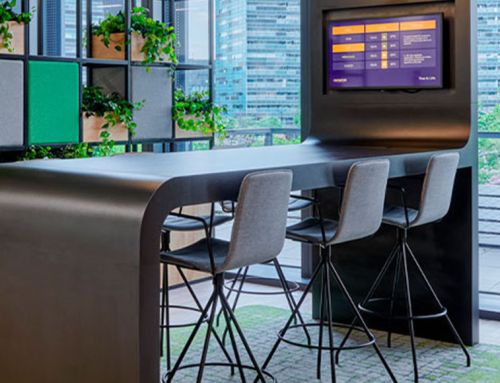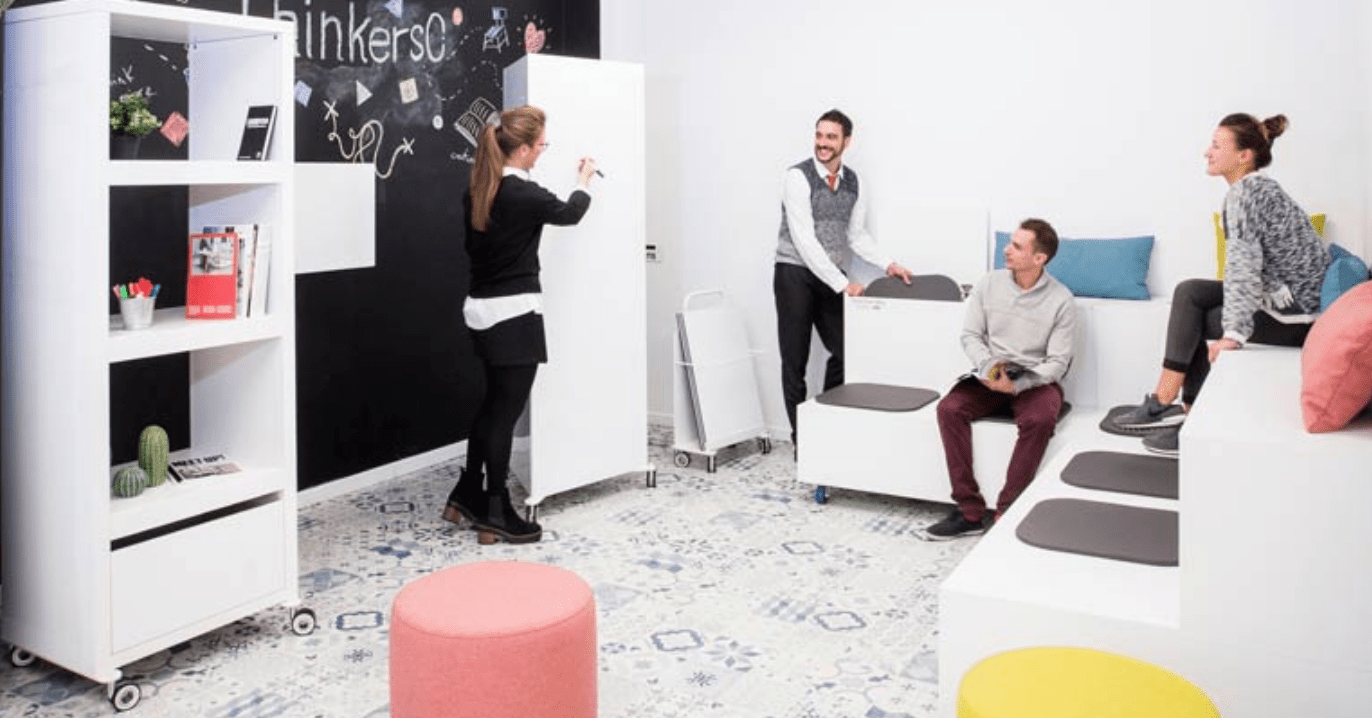
During the last decade work spaces have undergone radical transformation. The new competition conditions of a global market along with digitalization and the progressive incorporation of new generations in companies has boosted new management methods based on mobility, flexibility, cooperation, transparency, innovation and social responsibility and environment. And above all, new work methodologies and human offices conceived for people.
The increasing importance of talent in organizations, values of new office users and companies themselves demand the creation of less informal and more human working environments, comfortable, safe and healthy.
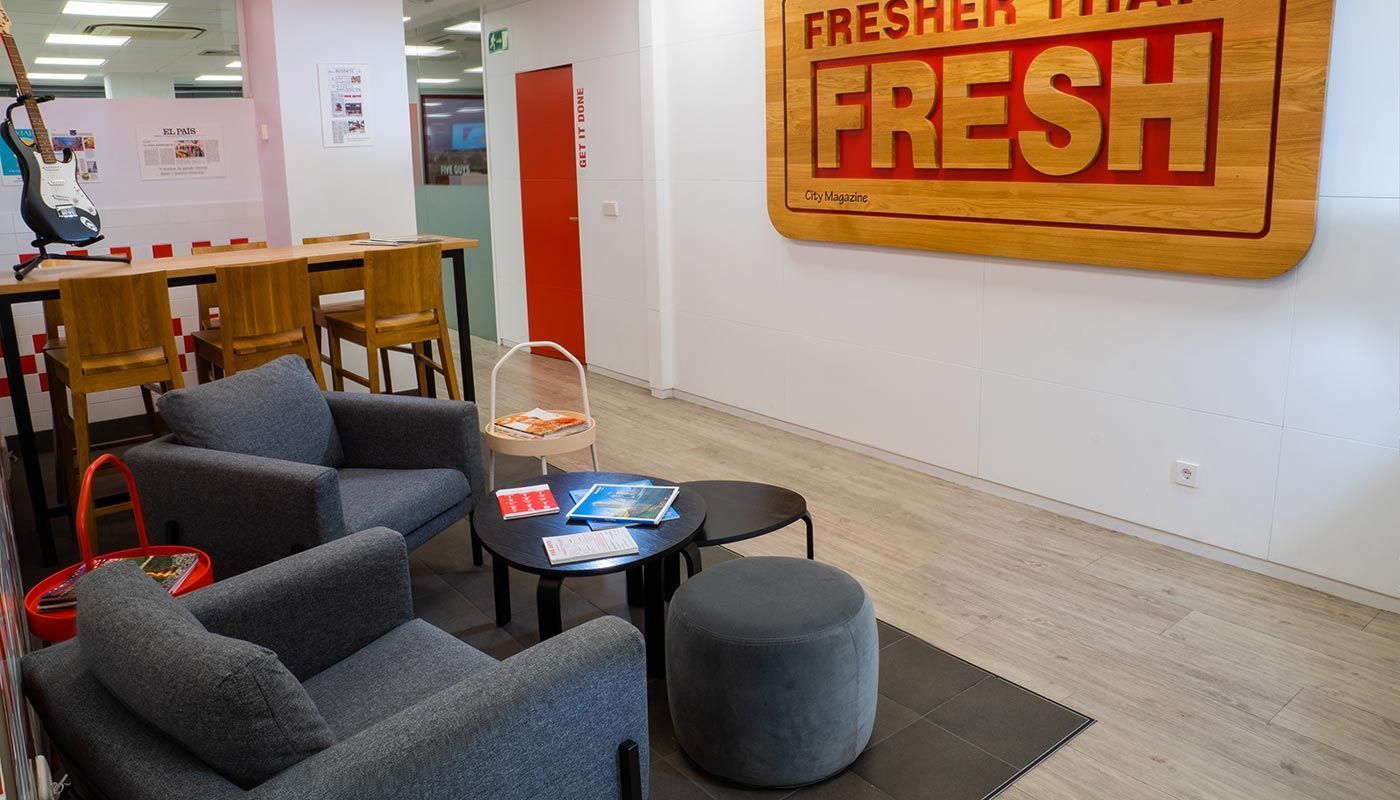
Five Guys – Madrid
This new physiognomy of offices provides workers with important benefits in respect to motivation, conciliation, health and quality of life at the workplace.
Today work-face has little sense, i.e., paying workers for their time. What is really important is the result and in the extent that it increasingly depends on creativity, qualification, knowledge and therefore it is necessary for them to be motivated, satisfied and in an stimulating environment.
The creation of cosy work environments designed and conceived for people is transforming the physiognomy of offices which tend to incorporate for example home elements and pay growing attention to issues such as inclusive design.
Break spaces in human offices
At the same time importance given by workers to social relations is promoting the item of proximity offices with the proliferation of break spaces; areas to relax, enjoy and meet where the cafeteria gains great importance. Even farm breaks, social areas thought as “urban farms” providing harmony to work spaces, emphasising ecologic values of the company and providing a more relaxing leisure and social interaction area whilst stimulating a shared responsibility activity with a very special symbolic reward: our own vegetables.

Schneider – France
This means that new working dynamics are favouring the design of innovative work spaces focused on people and contributing to their motivation; they favour professional-personal conciliation; favour skills and capabilities such as team work and creativity and with its ergonomics, caring at the same for the health of workers.
The work space, a rising value for talent
In addition to economic retribution, there are many factors that contribute to workers’ satisfaction and the skilling and retention of talent. Among them we find the work space.
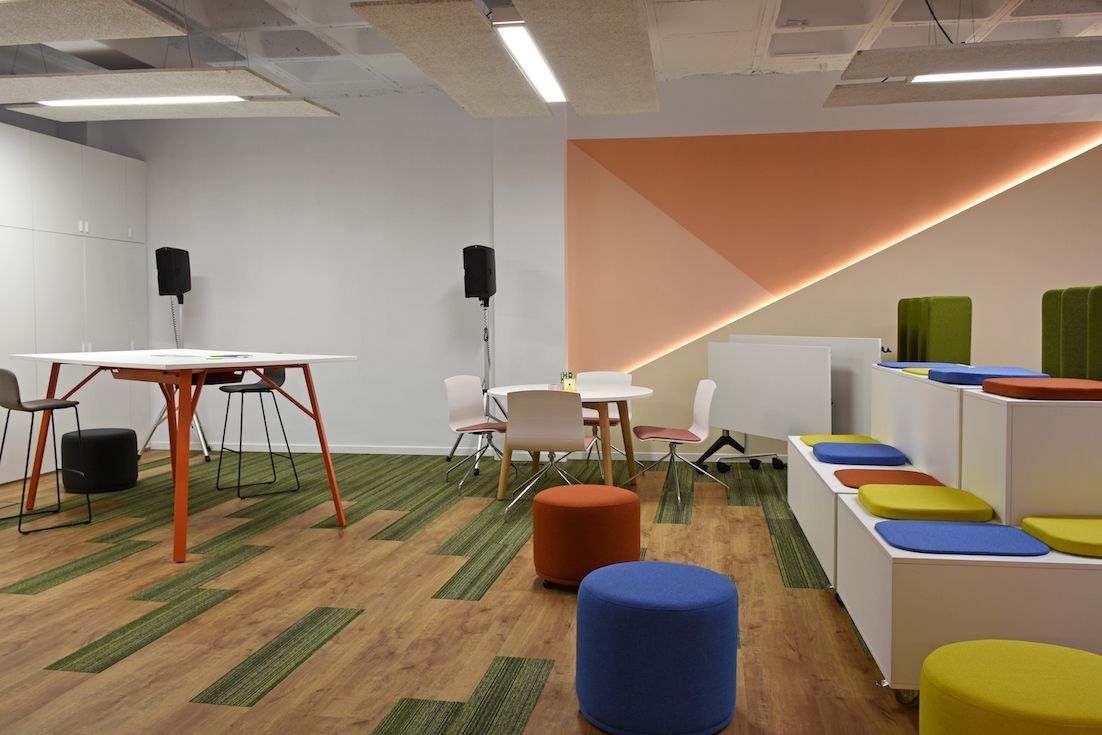
Its design will help us create a more amusing environment. Easing communication of people. Easing collaboration and socialization of offices. Creating the perfect scenario for the most disrupting brainstorming and showing the creativity of people. Achieving the so demanded flexibility by workers…Turning therefore the environment into the perfect space to work positively impacting on the life of people improving their perception of vital satisfaction.
The space tells us if the company values its people, if there are possibilities to grow in it, if it is transparent, in the end, if what they say is true.
There is another very important factor worth mentioning; there are workers motivated with what they do but demotivated with the environment. In order to be satisfied at the work place we need physical balance (related to work conditions) and mental balance. However 36% of workers complaint about some inappropriate aspects of the design of the station.
Without forgetting the problems arising from the excessive sedentary habits and wrong positions generally associated to a wrong office chair. Against these two problems, Ofita recommends the use of adjustable height tables that will allow us to work both seating and standing and changing positions, such as the Multilevel one, really ergonomic chairs that adapt to each user such as Hara.
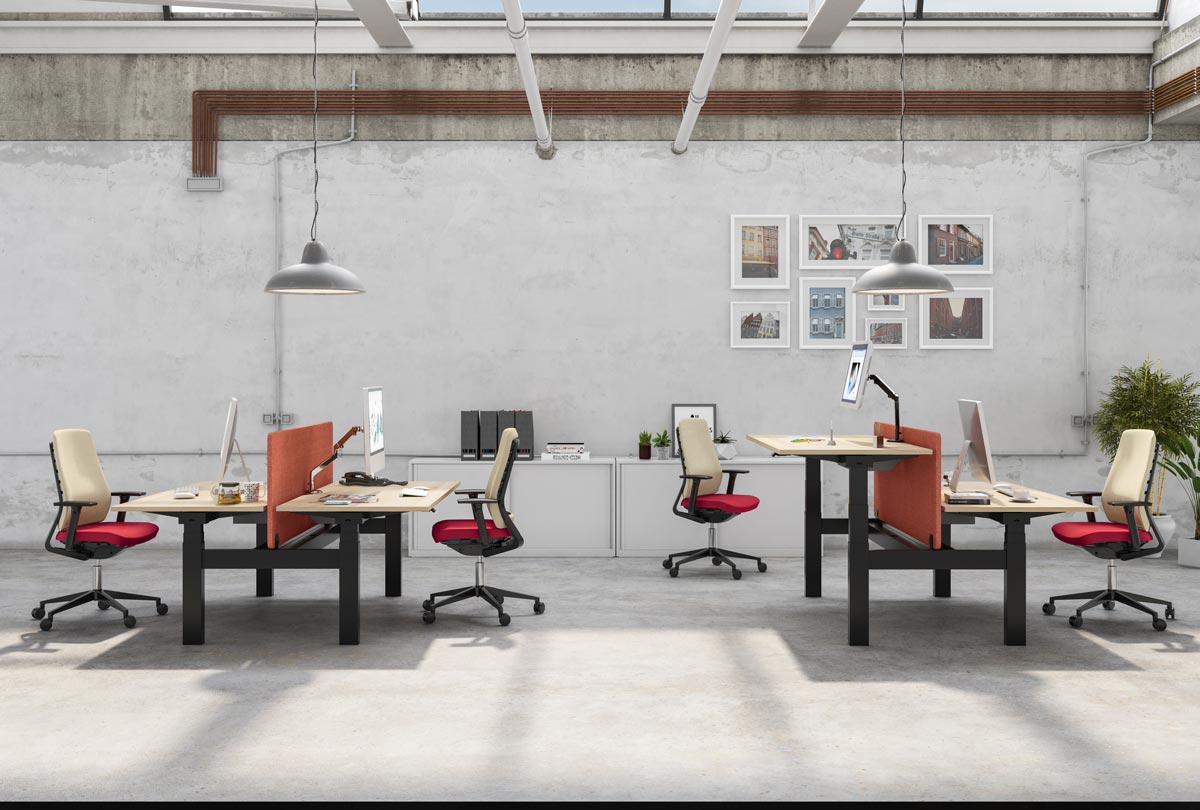
Multilevel & Hara
